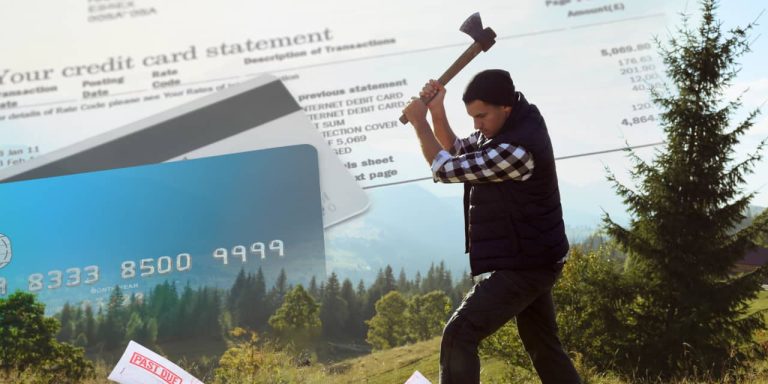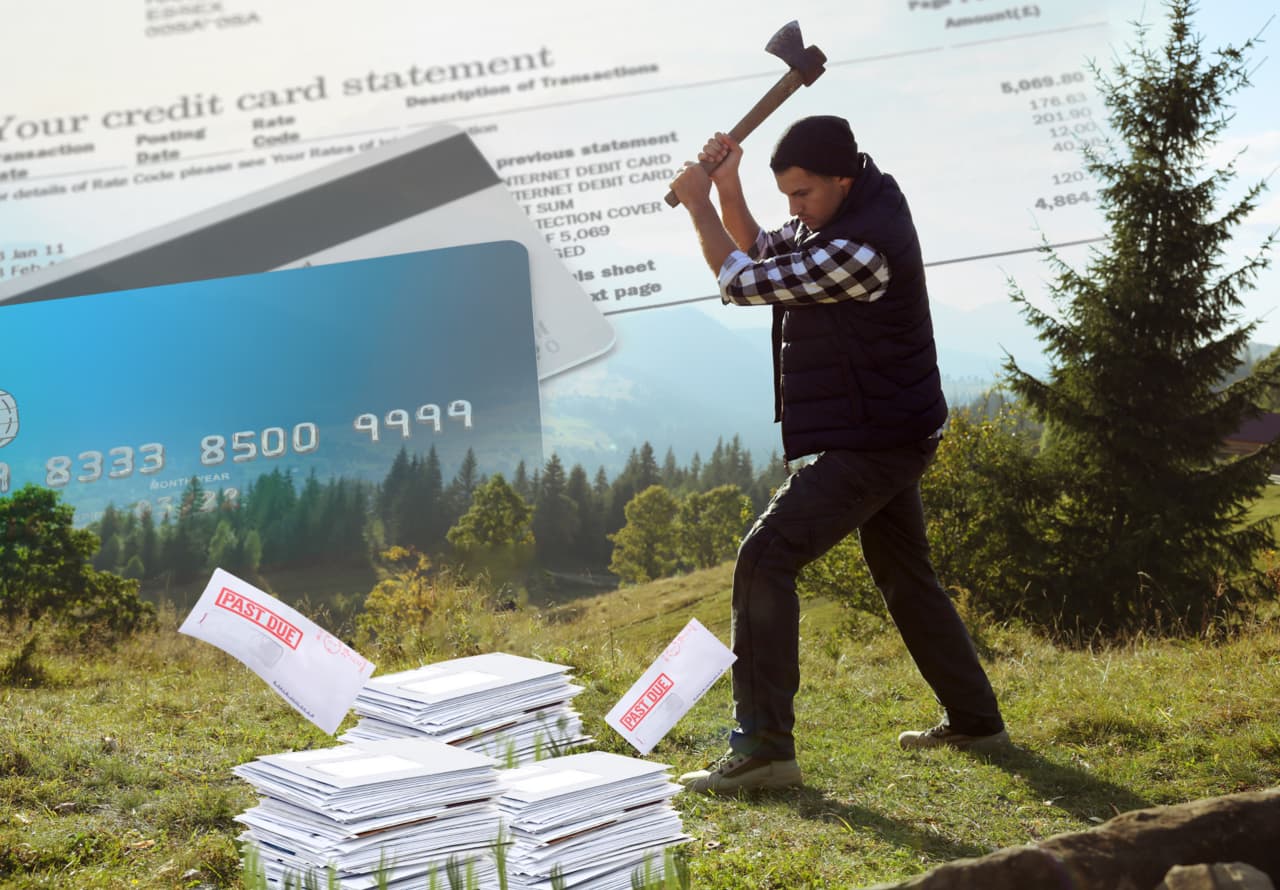Pledging to pay off debt in the new year is common, but the resolution has new significance for credit card bills in 2024.
Let's start with the numbers.
Americans had $1.08 trillion in credit card debt as of the third quarter of 2023. And that doesn't include the holiday shopping tag. About a third of consumers said they went into debt during the holiday season, racking up an average of $1,028, according to a Lending Tree survey.
Why is paying off credit card debt so important now?
Of all household debt, credit card debt amounts increased at the greatest rate from 2021 through the third quarter, according to Wells Fargo WFC.
Economists.
With interest rates rising in 2023, higher APRs on credit cards will make those unpaid balances more expensive. Card issuers charged an average of 22.7% on revolving credit card balances during the third quarter, according to the Federal Reserve. This represents an increase from 18.4% in the third quarter of 2022.
Credit card debt has burdened people this holiday season, said Bruce McClary, spokesman for the National Foundation for Credit Counseling.
Nonprofit credit counselors had a particularly busy holiday season, he said. “We typically see a slowdown in December,” McClary said, followed by a surge in demand early in the year. “This isn't really happening the same way it has in previous years.”
Saving more money, paying off debt and spending less are the top three financial resolutions for 2024, according to the annual survey by Fidelity Investments. The wealth management giant noted that this is consistent with previous surveys on New Year's resolutions.
The following year, paying off credit card debt was the top goal for older Americans with financial decisions, according to research by Edward Jones.
Here's how to turn your resolution to pay off debt into a reality in 2024.
Step #1: Be uncomfortable and look closely at your credit card debt
“Sit back and enjoy that really uncomfortable experience of closely examining your debt situation, looking at the good, the bad and the ugly,” McClary said.
This includes looking at your account balances and activity, interest rates on your card (or cards), monthly interest charges, the cost of minimum payments and whether you incur late fees on any payments. “The less you know, the worse things get,” he added.
Your credit card's APR plays a major role in how much your monthly payment will be, but 43% of people with a credit balance say they don't know the interest rate on their card, according to a Bankrate survey.
The average unpaid credit card balance is now $6,088, the highest amount in the past 10 years, according to credit reporting agency TransUnion TRU.
Getting more clarity on your debt situation can be as simple as making a paper list of your credit card balances or adding them up in a spreadsheet. Some people use budgeting apps that track income and expenses. However, some apps charge fees, and McClary also advises consumers to look closely to ensure the platform is securely handling users' personal financial data.
Step #2: Build a debt payoff routine
Now that you have a complete view of your total credit card debt, account activity, and monthly cost of interest rates, it's time to set a budget that can help you make only the minimum payment on your credit card. The budget “sets the limits of what is actually possible and helps set goals,” McClary said.
“The first rule is keep it simple,” he said.
One way to budget is the 50/30/20 rule, McClary said. This means allocating 50% of after-tax income to necessities such as housing, groceries, transportation, utilities, and debt. Then there is 30% for discretionary spending and 20% for savings and retirement.
When the goal is to pay off debt, one approach is to allocate somewhat less to discretionary and savings categories. This means that the 50/30/20 approach can become like the 60/25/15 approach, or some other breakdown.
“50/30/20 simplifies how these categories are divided, but these ratios are a starting point that you can adjust from time to time,” he said. McClary warned against excessive spending and saving.
Another important tool for fighting debt is setting up automatic payments, where your credit card payments are automatically deducted from your bank account on a specific day of your choosing, said Professor Abigail Sussman of the University of Chicago Booth School of Business. It studies how people make financial decisions. Most credit card companies allow customers to set up automatic payment arrangements.
“Perhaps the biggest insight from behavioral research over the past several decades is that simplification, making things easier, is going to be the way to get things done and get people to change their behavior,” she said.
One strategy is to set up automatic payments for a principal amount you know you can pay. But by closely monitoring your income and expenses, you should be able to identify times when you might have a little extra money available to pay your credit card bill. Seize this opportunity and pay more than the minimum payment whenever you can.
Paying only the minimum on a card can make it very difficult for consumers to get out of their debt. It would take about 25 years, for example, to pay off a $6,000 balance at a 22% annual interest rate by making only the minimum payments, according to one calculation. The cardholder will also receive over $10,000 in additional benefits.
It's good to know how much extra you can pay toward your credit card bill once your paycheck hits your bank account, Sussman said.
“You prioritize paying off debt, rather than making it an afterthought,” she noted.
Step #3: Select the card you want to focus on first
It is common to have more than one credit card. People own about four cards on average, according to a 2021 estimate from Experian EXPGY.
Each of these cards may have different annual interest rates and carry different balances. So which one should you try to pay off first?
One strategy is the “snowball” method, in which you pay off the smallest balance first, then move on to the next higher balance and pay it off, and so on.
Or there's the “avalanche” approach, which focuses on paying off debts with higher interest rates first, and then moves on to paying off cards with lower interest rates.
While the avalanche approach can ultimately save you more money in the long run by eliminating high interest payments first, the snowball method can sometimes help people build momentum on their journey to eliminating debt, because they feel a sense of… Achievement after passing a full credit off their list.
McClary said there was no need to take sides in the discussion. Choose whichever suits you best. “I stand with the consumer, and anything that motivates them to get to the finish line is a choice I would recommend,” McClary told MarketWatch.
Step #4: Use smaller goals to help you achieve your overall goal
A debt-free goal sounds great, but some people may find it very difficult to reach $0 when there is so much money in their wallet.
“What you don't want to do is end up in a situation where you feel like I didn't achieve my goal this month and so it's not worth it, I'll never get there and let me just stop trying,” Sussman said.
To avoid the best intentions turning into frustration, Sussman said people need “concrete” and “achievable” goals. It can also be helpful to use “subgoals” along the way, such as a monthly goal. They must also be prepared to review those goals when decisions align with reality, especially in the early months.
Let's say someone had $5,000 in credit card debt. The overall goal of paying it all off this year can seem scary in and of itself, Sussman said.
“Instead, reframing the larger goal of $5,000 into subgoals of paying $500 back each month can seem more manageable, and this more achievable goal will be more motivating,” she said.
However, people also need to give themselves discretion when setbacks and unplanned expenses derail plans, McClary and Sussman said.
“Life is not completely linear, and sometimes there are twists and turns,” McClary said. “You have to allow yourself the flexibility to adjust to those turns.”
“If the goals are realistic, you should be able to achieve them most of the time,” Sussman said. “And if you miss a month, you can get back on track the next month.”


